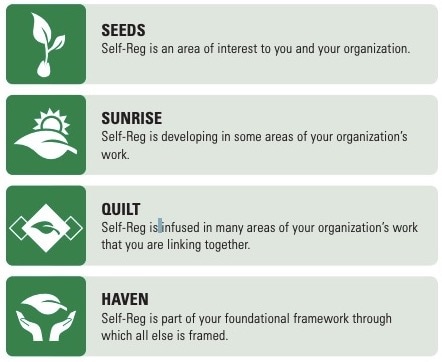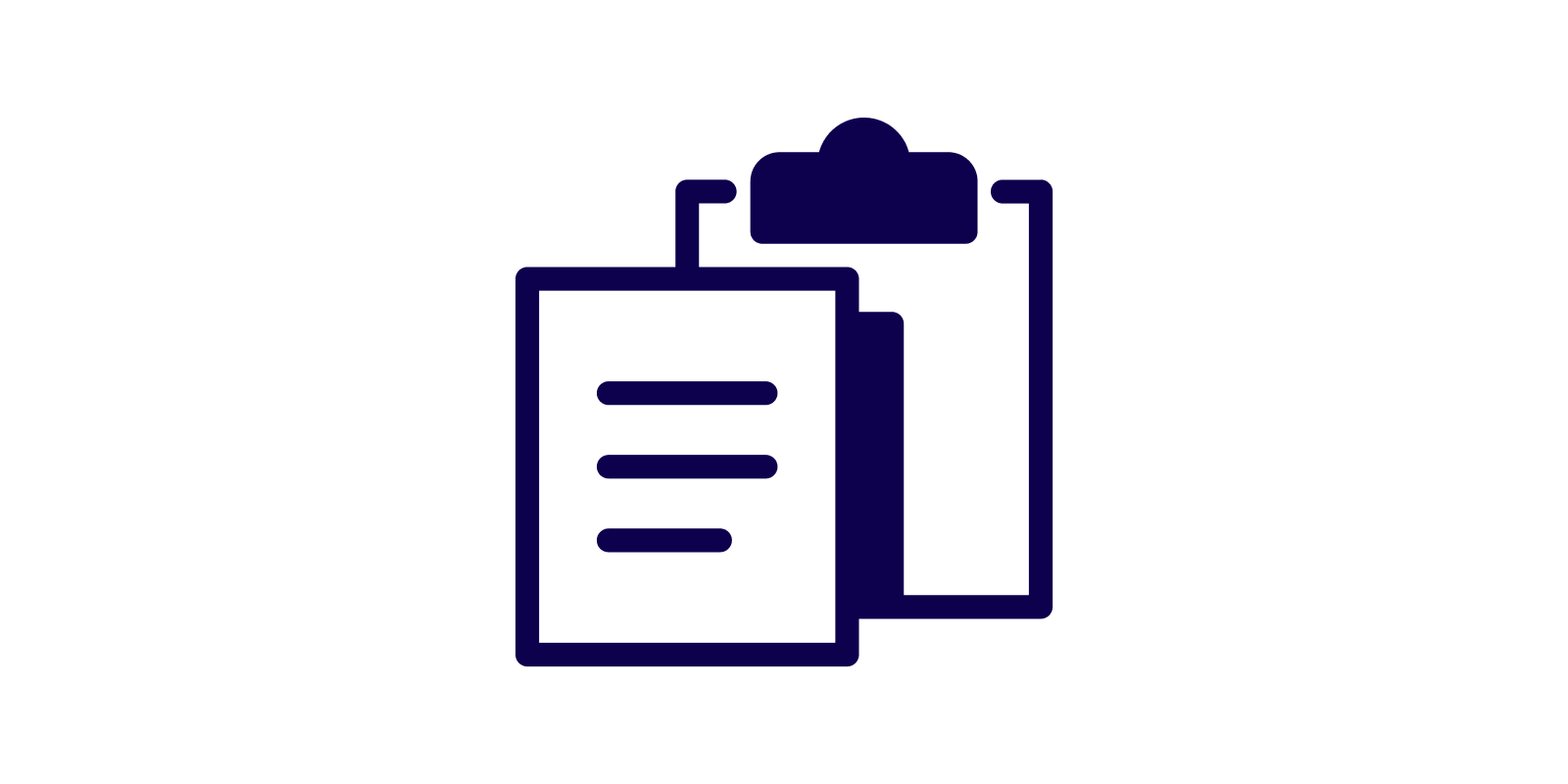Self-Reg Schools: A Handbook for Educators
When people want to learn how to make self-regulation a part of their teaching practice they often ask one question:
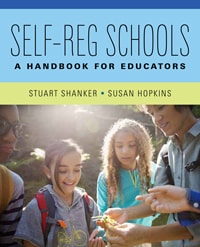
Discipline
Grade(s)
K - 6
Imprint
Pearson
Author(s)
Dr. Stuart Shanker, Dr. Susan Hopkins
How?
Self-Reg Schools: A Handbook for Educators answers that question by detailing how four models, or streams, of self-regulation environments develop in our classrooms and schools. Each stream is outlined with practical tools and strategies you can use to enhance your classroom so that it reflects and embodies the theory and practice of self-regulation for the benefit of all—you, your students, parents, and the community at large. This includes:
- a description of each stream—What does it look like? sound like? feel like?
- scenarios based on real classrooms and real teachers that exemplify the stream
- an easy-to-implement model that can be used with students, parents, and other practitioners, along with application tips
- stories from the field, written by practising educators, that explore one or more stream characteristics
- strategies to help you begin or extend the stream in your classroom
- an additional chapter that features three expert contributors--Drs. Jean Clinton, Gerard Costa and Heather Yang writing on anxiety, autism, and ADHD
- an accompanying website that features videos, line masters and additional hands-on support
Where Calm, Alert and Learning answered the what and why of self-regulation, this handbook answers that all-important question of how to do it and, more importantly, gives you the tools you need to make it happen!
Videos
In this series of three short videos, Dr. Susan Hopkins, co-author of Self-Reg Schools talks about practical strategies and tools you can use to help support Social Emotional Learning (SEL) and mental wellness throughout the day, and in different subject areas, including the new Ontario Math Curriculum strand.
An Introduction
 Play
Play
The Five Practices
 Play
Play
The Five Domains
 Play
Play
About the Self Reg Handbook
 Play
Play
About the Principal's Edition
This edition includes a copy of the Self-Reg handbook and access to an online principal’s resource. Here you’ll find summaries to support your learning, checklists to assess readiness, bookclub suggestions to guide staff exploration of the book, reflection questions, and actionable items to support your staff.
 Play
Play
About
The ideas, strategies, and tools presented in this handbook are not the product of some academic team working in a cloistered laboratory but the fruit of all the work the authors have done with educators, health professionals, support specialists, and parents since Calm Alert and Learning came out—learning from and with them. The first generation of “Self-Reggers” began sharing stories—examples of what worked and what did not; why it was so important to work on all five of the domains of Self-Reg and not just the biological; how important it was to ground everything they were trying to do with their students in their own lives (their own stress awareness); and, maybe most importantly, how every teacher and every school sets out from a different starting point and has their own unique obstacles to overcome.
In other words, the core principle of individual differences applies to how we do Self-Reg. What works for one child, one class, or one school may not work for another, which is one of the big reasons why Self-Reg is not something that can be bought off the rack but has to be custom tailored. It is the principles that matter here: the embodied understanding of what students or we ourselves are thinking and feeling.
It was from experiences from teachers that the authors came up with the four Self-Reg school streams: Seeds, Sunrise, Quilt, and Haven (See second tab to learn more about the streams)
Each stream is designed to meet the expressed needs of teachers, students, and schools—those who are just starting out on their Self-Reg journey, those who have started and are eager to get to the next stage, and those who are farther along in their journey. Regardless of where one might be on this journey, many share some common underpinning areas of professional learning focus:
- reading the signs of excessive stress in children and ourselves;
- recognizing the different kinds of stressors, hidden and overt;
- developing effective techniques for reducing stress and enhancing stress awareness;
- distinguishing the differences between misbehaviour and stress behaviour;
- recognizing maladaptive modes of self-regulation for what they are;
- evolving and testing out ideas about what students can do to maximize the learning experience; and
- supporting all educators to enhance their own beneficial modes of self-regulation and maybe even enhance (or rediscover) the joy that inspired them to become teachers in the first place. It was precisely in order to meet these needs that we created this handbook—as much an essential step in our own Self-Reg journey as it will be, we hope, for every one of you.
An overview of the 7 chapters:
- Chapter 1 reviews Self-Reg and the science behind it
- Chapter 2 reviews the framework (five-domain model, five-practice method)
- Chapter 3 to 6 outline 4 streams or journeys that a class or school can take to implement SR (each of these chapters Include indicators teachers and principals can use to assess readiness, tools, strategies, scenarios, stories from the field)
- Chapter 7 addresses three common conditions teachers face in classrooms: anxiety, autism, ADHD, written by guest contributors (Drs. Jean Clinton—anxiety, Gerard Costa—autism, Heather Yang—ADHD)
A companion website is available and includes a variety of supports for Teachers and schools.
Some include:
- About Cards that includes general information.
- Chapter Cards (1 per chapter) with videos, tools, and line masters referenced in the book.
- A Principal’s Corner. The Principal's Edition includes an access code (found in the inside front cover) to get access to the content.
Sample Principal’s Content (Chapter 3)
Chapter at a Glance
Is Seeds the Right Journey for Your Staff?
Getting Started
Leader Tips
Strategies
Tools
Reflection Questions
Book Club Questions
Communication Suggestions
Twitter
Newsletters
Authors
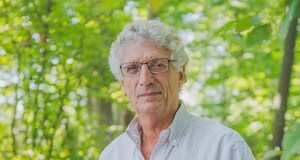
Dr. Stuart Shanker
Dr. Stuart Shanker is a Distinguished Research Professor Emeritus of Philosophy and Psychology at York University and CEO of The MEHRIT Centre Ltd. (TMC). Dr. Shanker’s framework and method for supporting self-regulation by understanding and addressing stress, energy, and tension have sparked a revolution in how educators think about children’s behaviour and learning. His books Calm Alert and Learning, and Self-Reg have had a profound influence on teachers and school administrators across Canada and around the world.
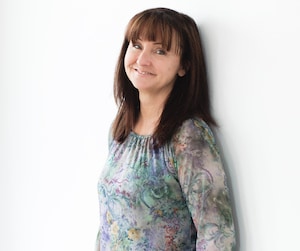
Dr. Susan Hopkins
Dr. Susan Hopkins, Executive Director of The MEHRIT Centre (TMC), is an experienced, passionate educator who has worked in all areas of education over the last two decades. She strongly believes in the potential of every child, and that the wellbeing of all educators should be a top priority for schools today. Under her leadership, TMC has grown into a dynamic, multifaceted worldwide centre for learning how to support children’s self-regulation in schools and families via Shanker Self-Reg®. Susan has been instrumental in the development of TMC’s successful online Self-Reg courses and has given Self-Reg presentations and worked in partnership with schools and communities across Canada and beyond.
FAQs
1. I have the resource Calm, Alert and Learning. Why should I buy this book?
It extends Calm, Alert and Learning with new research. It helps users chart a developmental path to move Self-Reg forward in a classroom or school.
2. How is it different from the Calm, Alert and Learning resource?
Calm, Alert and Learning focused on the 5 domains. This book extends that work by creating a Self-Reg framework that combines the domains with the five practice method: reframe, recognize, reduce, reflect, respond. It has a practical rather than theoretical focus.
3. Our school has an SEL program already in place. Would this resource fit?
Yes, the Self-Reg Handbook can complement an existing program in classrooms and schools or be used on its own.
4. We have funds for mental health. Does this book address mental health?
The aim of Self-Reg Handbook is to help everyone manage stress and tension. In addition Ch. 7 addresses the effects of three conditions that impact positive mental health: anxiety, autism, ADHD.
Principal's Corners
Overview
Below is an overview of the digital resources corresponding to each of the teacher chapters:
Chapters 1 and 2: Content Summary
Reflection Questions
Book Club
Communication Resources
Chapters 3 to 6: Journey Overview
Assessing for Readiness
Model Summary
Strategies and Tools
Reflection Questions
Book Club
Communication Resources
Chapter 7: Content Summary
Model Summary
Strategy and Tools
Reflection Questions
Book Club
Communication Resources
How do I access the Principal's Corner?
Select Principal's Corner on the Companion Website.
Please note, you will need a code (found in the inside front cover of the Principal's Edition) to access the content.
Table of Contents
INTRODUCTION
CHAPTER 1
What Is Self-Regulation?
CHAPTER 2
The Self-Reg Framework
CHAPTER 3
The Seeds Self-Reg Stream
CHAPTER 4
The Sunrise Self-Reg Stream
CHAPTER 5
The Quilt Self-Reg Stream
CHAPTER 6
The Haven Self-Reg Stream
CHAPTER 7
In Self-Reg Schools, All Means All
Virtual Samples

